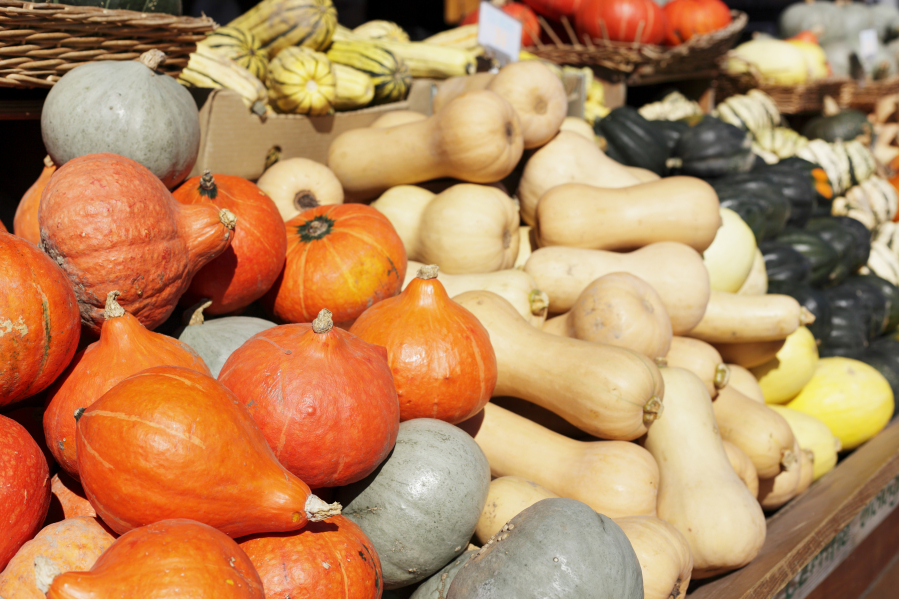Fall is upon us — and so are the winter squash! These versatile beauties are incomparable in taste, texture, variety and culinary uses.
Winter squash have been grown in the Americas by Native Americans for about 10,000 years as part of a staple diet of beans, corn and squash that could be grown together, providing a nutritious food source throughout the winter. It was introduced by Columbus to Europe, where it became popular throughout the Mediterranean basin.
All varieties of winter squash are low in calories and high in nutrients. One cup of cubed squash averages only 30 calories and is an excellent source of dietary fiber, vitamins A, B’s and C, folate, iron, potassium, omega-3 fatty acids and antioxidants.
Winter squash is an annual fruit that represents several squash species. At the farmers market you’ll find the common winter squash varieties that everyone knows: butternut, acorn, delicata, spaghetti squash and sugar pumpkins, along with more unusual varieties including ambercup, autumn Cup, banana, buttercup, carnival, fairytale pumpkin, gold nugget, hubbard, kobocha, sweet dumpling and turban. With the exception of delicata and spaghetti, all of these squashes are interchangeable in recipes. They are delicious roasted or sauteed and in soups, stir-frys, curries, sauces, biscuits, bread and in desserts such as cakes, cookies, puddings and pies. The uses for winter squash are virtually endless. Just use your imagination!



